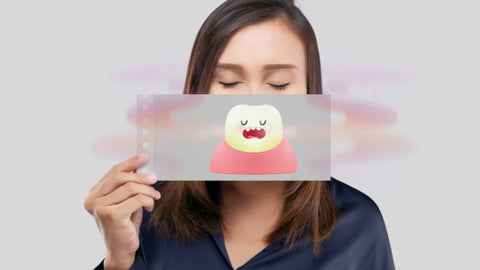Understanding the Generation Process of Halitosis
Breath of Fresh Knowledge: Decoding the Generation of Halitosis

Bad breath, or halitosis, is a common oral health problem that affects a large percentage of the population worldwide. While there are several factors that can contribute to bad breath, one of the primary causes is the generation and accumulation of volatile sulfur compounds (VSCs) in the mouth. In this blog post, we will discuss the bad breath generation process and how it can lead to persistent halitosis.
1. Bacteria begin to multiply after consuming food debris
The human mouth is a natural habitat for millions of bacteria, many of which are harmless and play a beneficial role in maintaining oral health. However, some of these bacteria can break down food particles and release sulfur compounds, which can cause bad breath. When food debris is left in the mouth, bacteria begin to multiply and feed on it, releasing VSCs in the process.
2. Bacteria rapidly increase, leading to the deterioration of oral environment and the occurrence of periodontal disease
As bacteria continue to feed on food debris and multiply, they can rapidly increase in number, leading to the deterioration of the oral environment. This can result in the formation of dental plaque, which is a sticky film of bacteria and food particles that adheres to the teeth and gums. Over time, the accumulation of plaque can lead to the development of periodontal disease, a serious gum infection that can cause tooth loss and other oral health problems.
3. Persistent bad breath (volatile sulfur compounds) occurs in the worsened oral environment
In a worsened oral environment with a high concentration of bacteria and VSCs, persistent bad breath can occur. The VSCs released by bacteria in the mouth have a distinct odor that is often described as “rotten egg” or “sulfur” smell. The presence of persistent bad breath can be an indication of an underlying oral health problem, such as gum disease or dental decay, and should be addressed by a dental professional.

In conclusion, the bad breath generation process begins with the multiplication of bacteria after consuming food debris. As the bacteria rapidly increase, they can lead to the deterioration of the oral environment and the occurrence of periodontal disease.
The accumulation of bacteria and VSCs can result in persistent bad breath, which can be an indication of an underlying oral health problem. Maintaining good oral hygiene practices, such as brushing, flossing, and taking oral probiotics , can help prevent the buildup of bacteria and food particles in the mouth and reduce the risk of bad breath.








